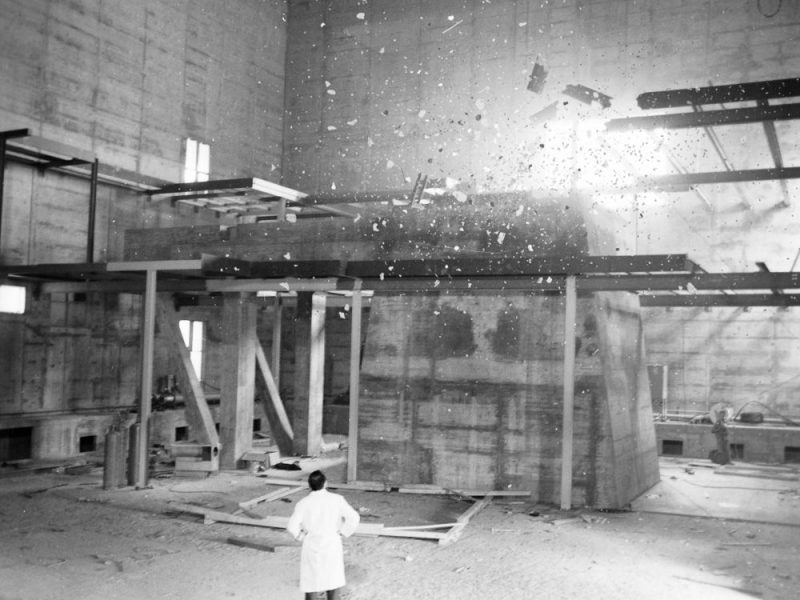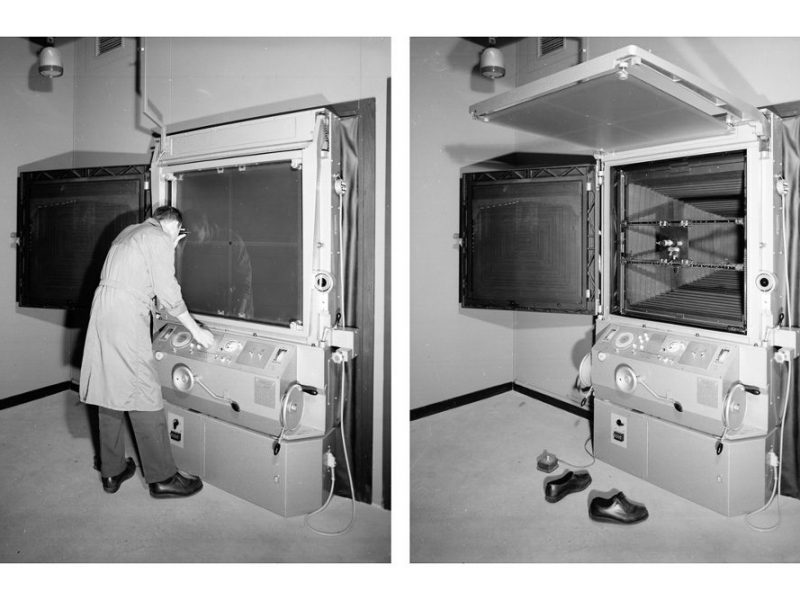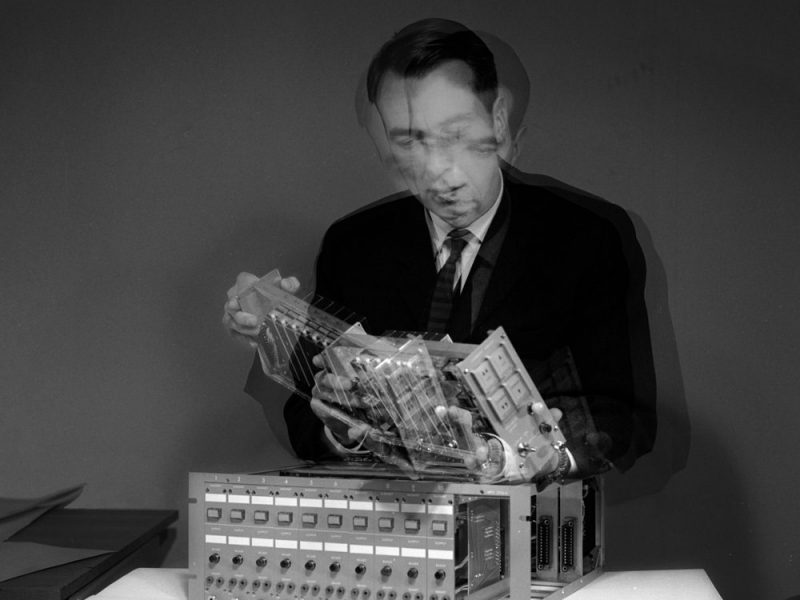Wolfgang
Wolfgang Ernst Pauli, one of the founders of quantum physics, was nicknamed the “Conscience of Physics”. But he was also known among his peers for something a bit less “scientific”.
Legend says that when Pauli entered a room, experiments would fail and machinery would break down. His colleagues jokingly called this phenomenon “The Pauli Effect”.
CERN recently released their photo archive spanning thirty years of cutting edge research. Even though Pauli died shortly before this archive started his presence still lingers; on a bust, a blackboard, a portrait, a book etc. This series is a semi-fiction where the Pauli Effect continues to haunt everyday life at CERN. Using and manipulating the archives, searching for experiments, accidents and Pauli’s presence.
Science isn’t fiction, science is weirder than fiction. Teleportation, ubiquity, levitation, spontaneous appearance. Inconceivable on a human scale, but totally logical on the scale of elementary particles. Working in the field of quantum mechanics is a wild ride, and even though the mythical Pauli Effect was a private joke among highly scientific minds, some of them were nonetheless superstitious enough to ban Wolfgang Pauli from even entering their lab.
In quantum physics as well as in photography, the act of observing is not a neutral act. It participates in the outcome of a scene. These photos are sometimes real, sometimes completely fabricated. The observer is actor in fixing what is science and what is myth.
David Fathi’s project is part of the group exhibition Archivi del futuro, curated by Diane Dufour, Elio Grazioli and Walter Guadagnini.



